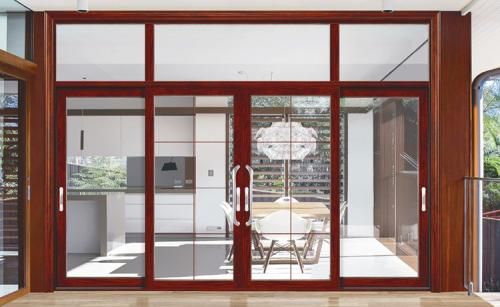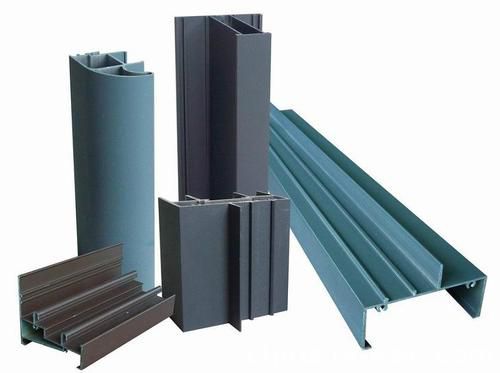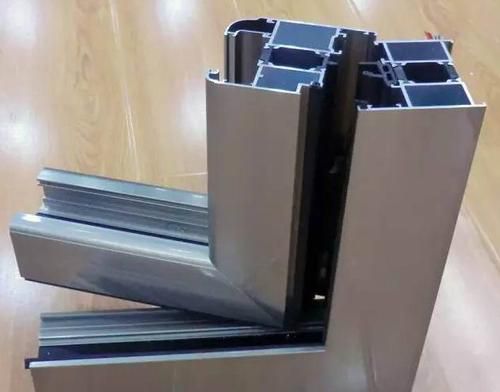1. Definition and product features of aluminum doors and windows:
It is an alloy based on aluminum with a certain amount of other alloying elements added, and is one of the light metal materials. The main alloying elements commonly used are aluminum, copper, manganese, magnesium, etc.


2. Characteristics of ordinary aluminum alloy profiles:
That is, the inside and outside are connected without an air layer, the inside and outside colors can only be the same, and the surface is sprayed with anti-corrosion treatment.
3. Features of broken bridge aluminum alloy profiles:
The so-called broken bridge refers to a method of making aluminum alloy door and window materials, which is divided into two ends during processing, and then separated by PA66 nylon strips and connected into a whole to form three air layers.

4. The difference and advantages and disadvantages of ordinary aluminum alloy profiles and broken bridge aluminum alloy profiles:
The important disadvantage of ordinary aluminum profiles is thermal conductivity. The whole is a conductor, and the heat transfer and heat dissipation are relatively fast. The indoor and outdoor temperatures of the profiles are the same, which is relatively not environmentally friendly;
The broken bridge aluminum profile is separated by PA66 nylon strips to form three layers of air layers, and the heat will not be transferred to the other side through heat conduction, thus playing the role of heat insulation. There is no conductor inside and outside, the temperature difference between inside and outside is different, the color can be diversified, the appearance is beautiful, the performance is good, and the energy saving effect is good.
5. What are the wall thicknesses of aluminum alloy window profiles and door profiles?
The wall thickness of the main stress-bearing parts of aluminum alloy window profiles is not less than 1.4mm. For high-rise buildings with more than 20 floors, you can choose to increase the thickness of the profiles or increase the section of the profiles; the wall thickness of the main stress-bearing parts of aluminum alloy door profiles is not less than 2.0mm. It is the national standard that meets the requirements of wind pressure resistance. A single door and window can be thickened if it exceeds 3-4 square meters. If it is too large, it can add columns or increase the section of the profile.
6. The concept of heat transfer coefficient:
We often hear the word heat transfer coefficient when buying doors and windows. In fact, this word is the embodiment of the thermal insulation performance of doors and windows. So what is the contagion coefficient? That is, when testing, the internal heating passes through the time to see the speed at which the internal temperature conducts outward, and the heat transfer value is obtained through the time and temperature.
7. What is the heat transfer coefficient of ordinary aluminum alloy doors and windows? What is the heat transfer coefficient of broken bridge aluminum alloy doors and windows? What is the heat transfer coefficient of the system aluminum alloy doors and windows?
The heat transfer coefficient of ordinary aluminum alloy doors and windows is about 3.5-5.0;
The heat transfer coefficient of broken bridge aluminum alloy doors and windows is about 2.5-3.0;
The heat transfer coefficient of the aluminum alloy doors and windows of the system is about 2.0-2.5.
8. What are the surface treatment processes for aluminum alloy profiles?
Profile surface treatment: outdoor spraying, fluorocarbon spraying, metal powder spraying and electrophoresis, etc.; indoors, in addition to outdoor treatment processes, there are wood grain transfer printing, wood grain lamination and solid wood, etc.
9. How many years is the warranty period of doors and windows? What is the work within the scope of the warranty, and what is not the work within the scope of the warranty?
The national standard for the warranty period of doors and windows is two years, and damage caused by human factors is not covered by the warranty period.
10. What is the role of doors and windows in architecture?
To set off the style of the building, the key is energy saving, environmental protection, sound insulation, and ease of use.
Post time: May-17-2023

